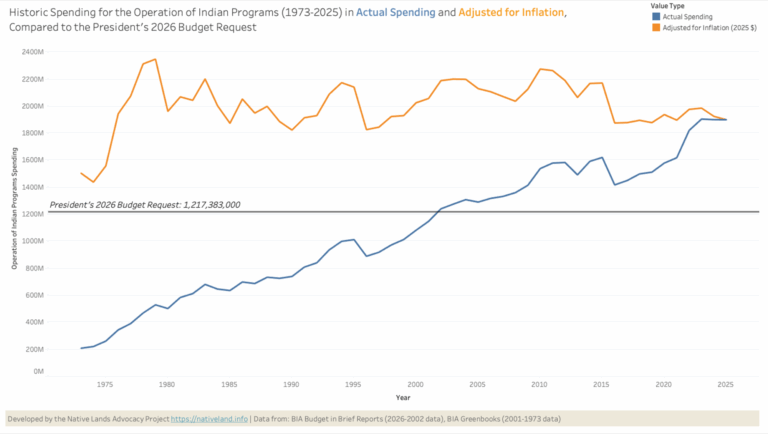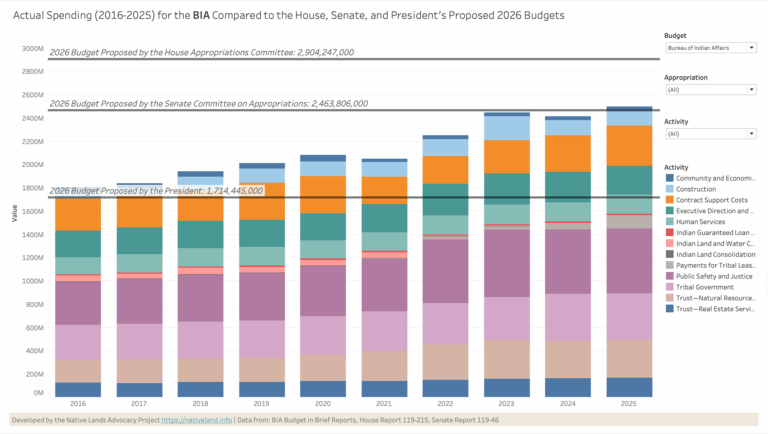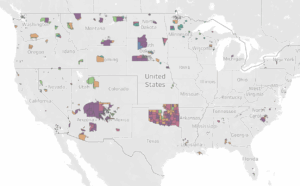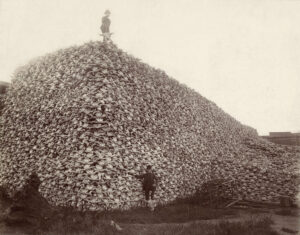Every year, the United States Congress begins the process of appropriating funds for the following fiscal year. While it’s important that voters are aware of these funding decisions in order to advocate for their areas of concern—and it is especially vital for Tribal Nations and their citizens to assess how the U.S. is meeting its self-appointed trust responsibility via the disbursement of funds—this process can nonetheless be difficult to follow. In our recent storymap, the Native Lands Advocacy Project (NLAP) outlines what we currently know about 2026 funding for Indian Country by focusing on three budgets: the Bureau of Indian Affairs (BIA), the Bureau of Indian Education (BIE), and the Bureau of Trust Funds Administration (BTFA).
Highlights from our findings include:
Though federal spending in Indian Country has increased in the last ten years, BIA and BIE budgets have barely kept pace with inflation, meaning that these bureaus have no more spending power today than they did in 2016. Furthermore, both federal and tribal sources report gross underfunding for services the U.S. is obligated to provide.
"Native American program budgets generally remain a barely perceptible and decreasing percentage of agency budgets. Since 2003, funding for Native American programs has mostly remained flat, and in the few cases where there have been increases, they have barely kept up with inflation or have actually resulted in decreased spending power."
U.S. Commission on Civil Rights, 2018
Despite Indian Country’s needs, the President’s 2026 Budget requested shockingly low funds for Indian Country. NLAP finds no historic precedent for the proposed Operation of Indian Programs budget, and the American Indian Higher Education Consortium calls the proposed BIE budget “catastrophic.” Tribes emphasize that treaty-guaranteed services should not be targeted for federal savings.
The Appropriations Committees of the House and Senate have approved their initial budgets, which recommend higher funding levels than the President’s budget. The House, in particular, recommends significant increases in investments in many of the BIA and BIE’s activities.
While Congress continues to work to negotiate these numbers, Tribal Nations and voters can advocate for their areas of interest and concern. Concerns about government shutdowns and their negative impact on Tribal communities remain high as the 2026 fiscal year begins with no appropriations bills passed.
"The unique history and political status of Tribal Nations and the government-to-government relationship with the United States means that no aspect of a shutdown happens in a vacuum for Indian Country and all Tribal Nations are affected."
National Congress of American Indians, "National Native Organizations Oppose Federal Shutdown," 2023
Interested in learning more? Read our full analysis of the proposed 2026 budgets for the BIA, BIA, and BTFA in our new storymap, Understanding the 2026 Federal Budget for Indian Country!














